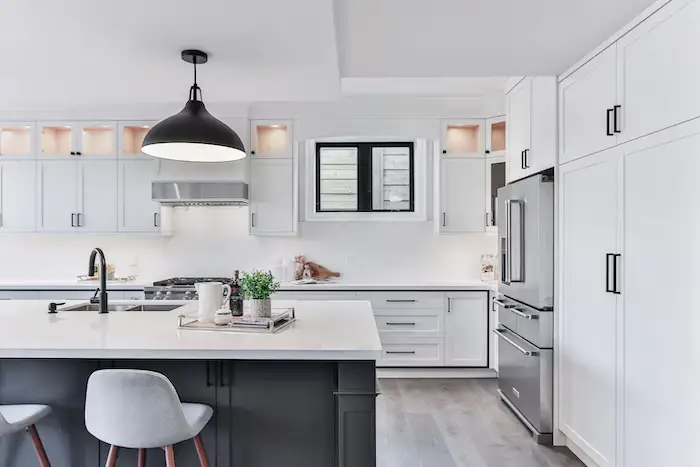The kitchen is often considered the heart of the home, a place where meals are prepared, and memories are made.
Over the centuries, kitchen designs have evolved dramatically, from classic looks to modern twists with Coloured Acrylic Splashbacks, reflecting changes in technology, culture, and lifestyle. Let’s journey through time to explore the fascinating milestones in kitchen design.
The Hearth of Ancient Times
In ancient times, the kitchen was a simple space with an open hearth, used for cooking and warmth. The hearth was the centre of family life, where people gathered to cook, eat, and socialise. Early kitchens lacked the modern conveniences we take for granted today, but they were functional, with a focus on practicality and communal living.
The Middle Ages: Kitchens in Castles and Manors
During the Middle Ages, kitchens in castles and manor houses were large, bustling spaces equipped to prepare meals for many people. These kitchens often included large fireplaces for cooking, wooden tables for food preparation, and shelves for storing utensils. The emphasis was on functionality, as these kitchens were designed to cater to large households and frequent feasts.
The Renaissance: Elegance and Innovation
The Renaissance period brought a new level of elegance and innovation to kitchen design. Kitchens began to feature chimneys to vent smoke, making the space cleaner and more pleasant.
The use of tiled floors and walls became popular, adding an element of style and practicality. The introduction of the brick oven allowed for more diverse cooking techniques and improved the overall efficiency of the kitchen.
The Industrial Revolution: Transforming the Kitchen
The Industrial Revolution in the 18th and 19th centuries marked a significant turning point in kitchen design. The advent of coal and gas stoves replaced open hearths, making cooking more efficient and less labour-intensive.
The introduction of cast iron stoves and the widespread availability of kitchen utensils revolutionised the way people cooked and stored food.
The Early 20th Century: Modern Conveniences
The early 20th century brought about the advent of modern conveniences that transformed the kitchen into a more efficient and hygienic space.
The invention of electric appliances such as refrigerators, toasters, and mixers revolutionised food preparation and storage. Kitchens became more streamlined, with built-in cabinets and worktops designed to make cooking more efficient.
The Post-War Era: The Birth of the Modern Kitchen
The post-war era in the mid-20th century witnessed the birth of the modern kitchen as we know it today. Open-plan layouts became popular, integrating the kitchen with living and dining areas to create a more social and inclusive space.
The use of bold colours and new materials, such as Formica and stainless steel, added a touch of style and sophistication.
The 21st Century: Technology and Sustainability
In the 21st century, kitchen design continues to evolve, driven by advances in technology and a growing emphasis on sustainability.
Smart appliances, such as refrigerators with touchscreens and voice-activated assistants, have made kitchens more interactive and user-friendly.
Eco-friendly materials and energy-efficient appliances are becoming increasingly popular, reflecting a growing awareness of environmental issues.
Closing Word
From the open hearths of ancient times to the high-tech kitchens of today, the evolution of kitchen design reflects broader changes in society and technology.
Each era has brought new innovations and styles, shaping the kitchen into the multifunctional and aesthetically pleasing space it is today.
As you consider your own kitchen design, remember that you are part of a rich history of culinary creativity and innovation.

